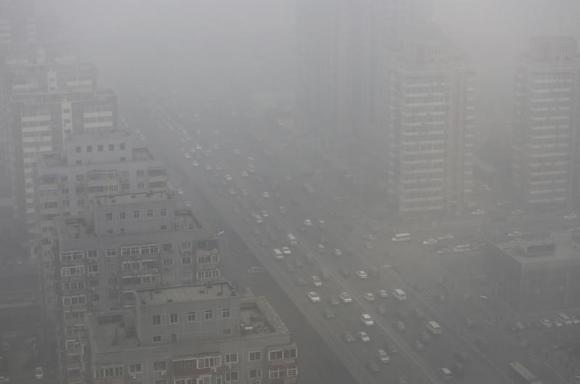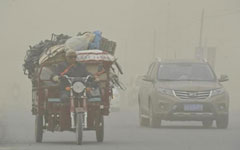China to boost funding for local govt that cut emissions
Updated: 2014-05-28 15:38
(Agencies)
|
|||||||||||
 |
|
Cars drive on the Three Ring Road amid the heavy haze in Beijing February 26, 2014. [Photo/Agencies] |
China will boost funding to regions that do well in reining in air pollution and punish laggards, the cabinet has decided, as Beijing pushes local governments to step up the war on smog.
The fight on crippling pollution has risen to near the top of the national agenda, but is still ignored by some local governments that remain focused only on growing their economies.
Beijing now promises more money to regions that do well on cutting emissions of pollutants such as sulphuric dioxide and nitrous oxide.
 |

|
Local governments that do well will get more funding from Beijing, while those that miss targets will get less, and may also face disciplinary action.
Officials who fake environmental data will be punished and may even face criminal charges, the cabinet said.
The decision is the latest move by China's leaders towards a more sustainable economy as they turn away from dependence on energy-intensive and economic growth.
"We now no longer request the regions to blindly pursue rapid GDP growth, and it isn't just the central government that recognizes that this way of doing things has no future, but local governments as well," Huang Qunhui, director of the Institute of Industrial Economics of the China Academy of Social Sciences told reporters in the capital last week.
Last year the government said it would increasingly take into consideration additional indicators, such as resource use, environmental damage, industrial overcapacity, scientific innovation, work safety and newly-added debt.
Related Stories
Energy, emissions goals appear cloudy for 2015 2014-05-27 07:12
China to take 5 million old cars off road in 2014 2014-05-26 16:00
State Grid upgrades aim to reduce haze 2014-03-28 00:43
Chinese cities open up green car markets 2014-03-21 16:53
Top legislature paves way to amend pollution law 2014-03-05 09:04
Beijing goes 'all-out' against air pollution 2014-01-16 17:28
Today's Top News
Russia bans 'historically false' WWII movie
Egypt extends presidential vote
'Homemade electricity' creates buzz
UK debates on its EU membership
Fighting kills 40 in east Ukraine
Britain encourages students to work in China
Ukraine to pay gas debt to Russia
Parties stunned by EP election results
Hot Topics
Lunar probe , China growth forecasts, Emission rules get tougher, China seen through 'colored lens', International board,
Editor's Picks

|

|

|

|

|

|





